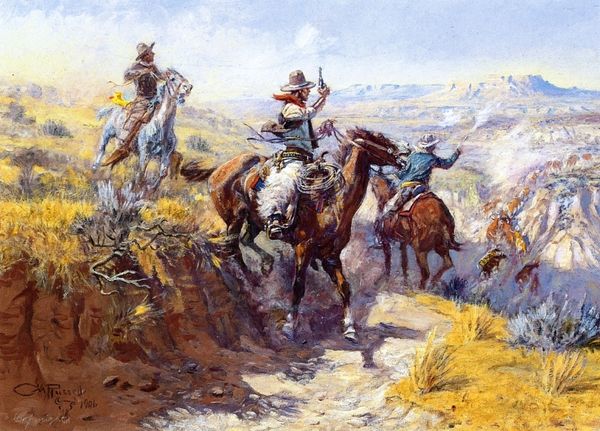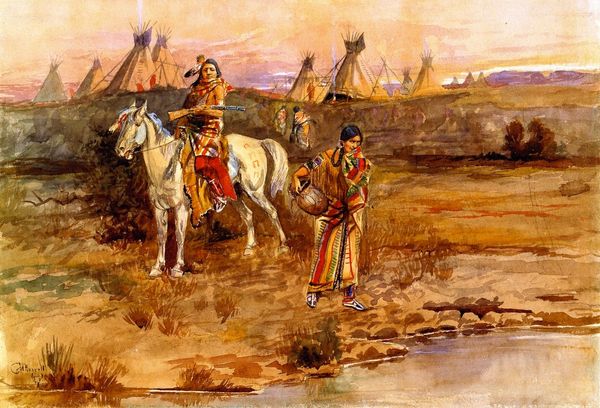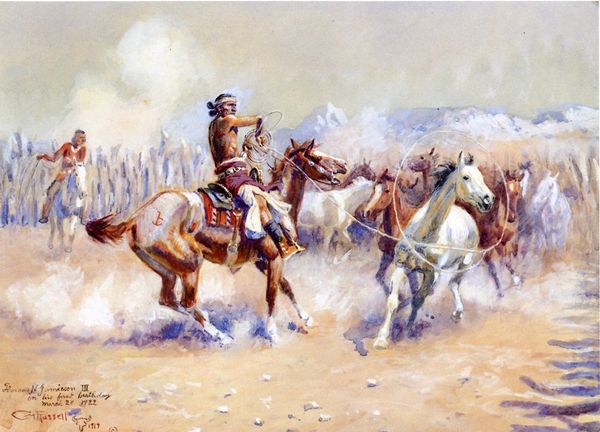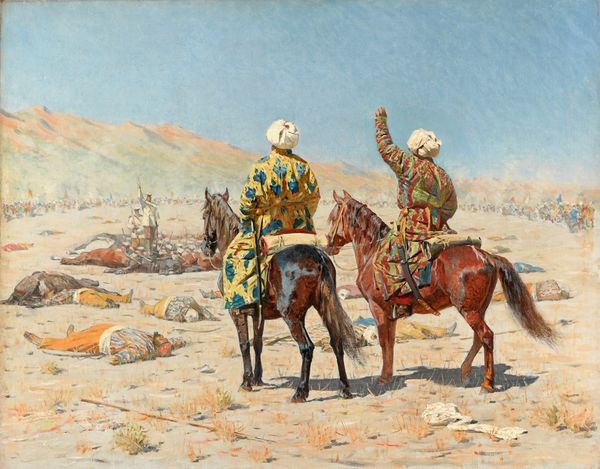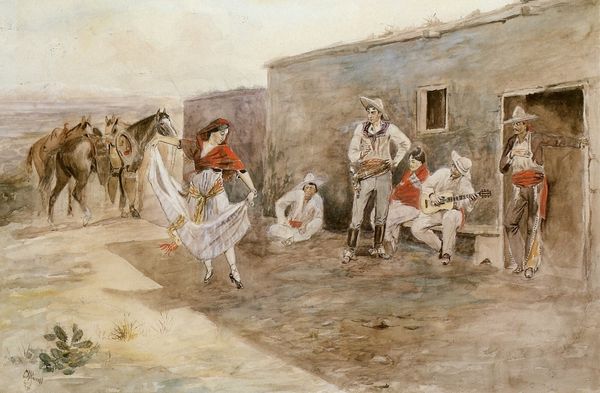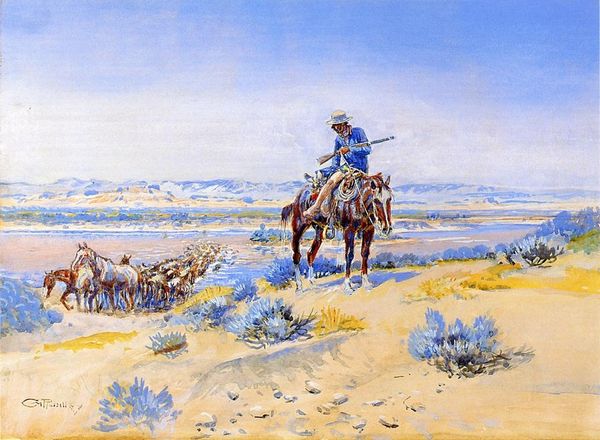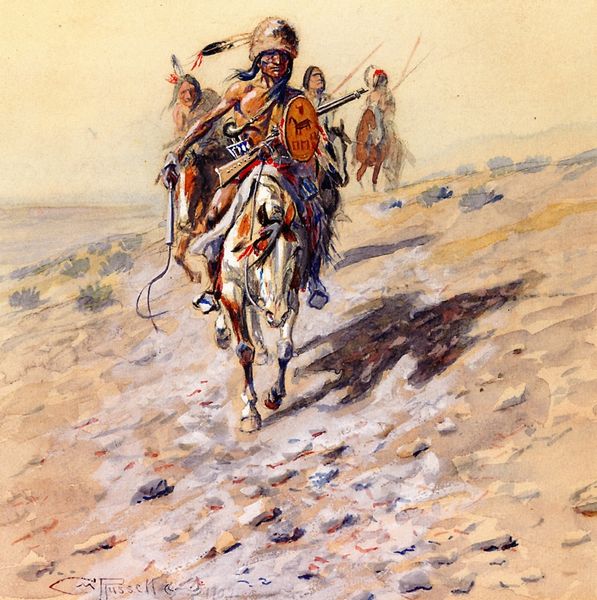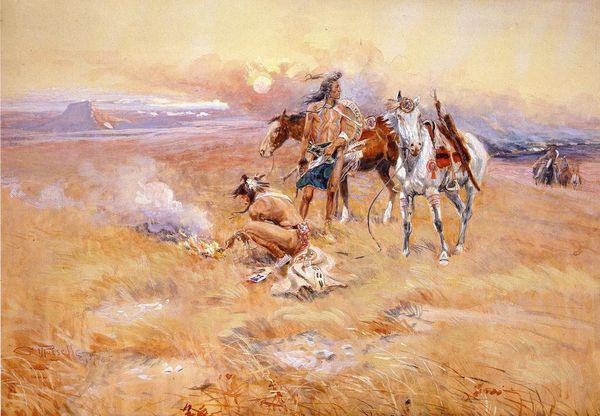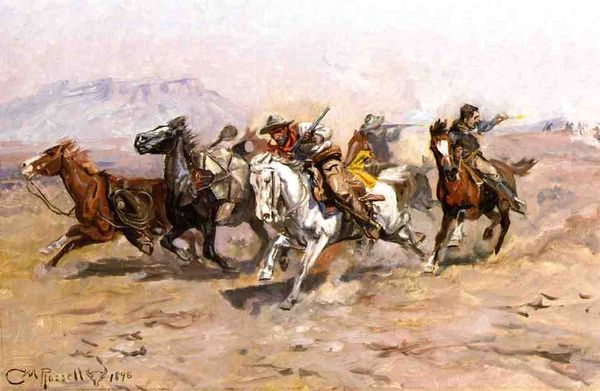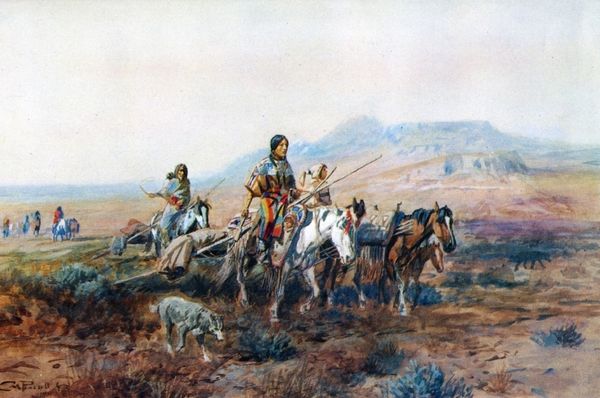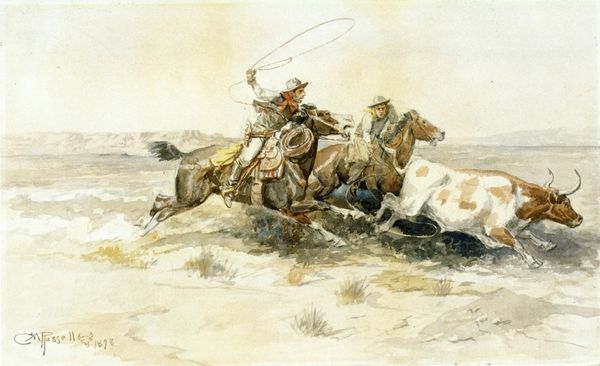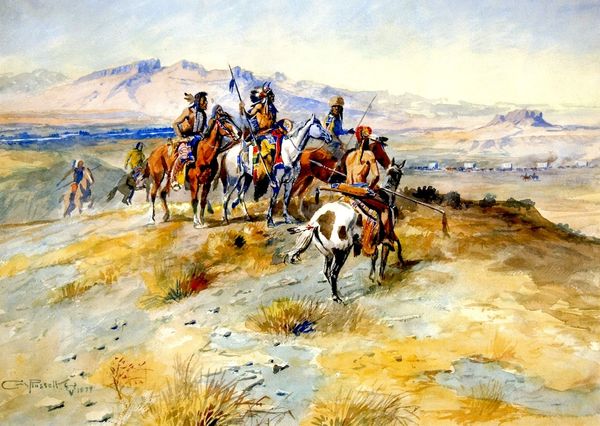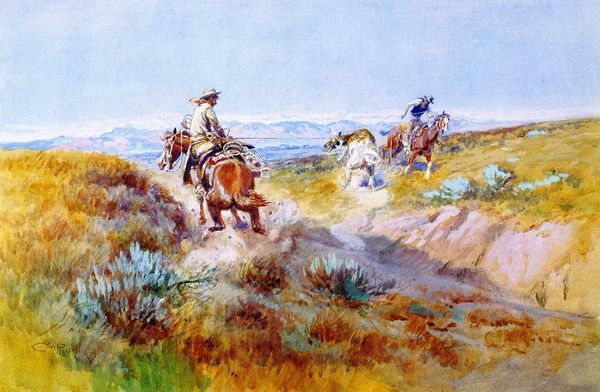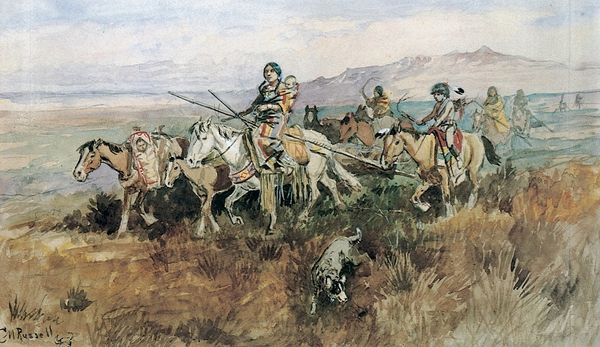
Copyright: Public domain
Curator: Look at this painting. Entitled "Thoroughman's Home on the Range", created by Charles M. Russell in 1897. It’s rendered in watercolor and embodies a fusion of realism and romanticism, giving us a glimpse into a very specific moment in time. Editor: My first thought is, this scene feels incredibly gendered. You have the stoic cowboy, posed and upright, juxtaposed with domestic labor being done by women. I wonder what a critique of this division of labor would reveal. Curator: Absolutely, the social dynamics at play here are vital. Russell, even when seeming to depict an objective view of the West, is always shaping a narrative. How does he define masculinity here through this contrast? Is he valorizing a disappearing lifestyle or subtly critiquing its constraints, particularly on women? Editor: It also strikes me that he presents it almost as if this woman is doing a service for the Cowboy by keeping his clothes and domestic spaces clean; this representation really begs us to think about these gendered and racialized tropes embedded within portrayals of frontier life. The inclusion of the chickens and the dog amplify a focus on homesteading labor, it all reinforces the woman’s traditional domestic role. Curator: And what about the positioning of the subjects? Notice how the cowboy on horseback dominates the visual space, directing his gaze outward, a man of the world. While the woman hangs the wash right in front of the small house almost as though she's framed by it, restricted. There are different realities represented. What does it reveal that there seems to be little connection between the people present, seemingly unaware of each other. Editor: Right. They are together yet apart, embodying different spheres of influence, perhaps unintentionally exposing a nuanced dialogue between self-determination and constraint. Perhaps we can consider it to highlight issues still relevant to present dialogues around power dynamics, labor and equity. Curator: This piece invites viewers to grapple with those tensions. Through his artistic lens, Charles Russell captures not only a time but a space teeming with social undercurrents—where gender, race, and labor converge in the landscape. Editor: Exactly. These seemingly quiet paintings speak loudly, urging us to reconsider our assumptions about historical roles.
Comments
No comments
Be the first to comment and join the conversation on the ultimate creative platform.
